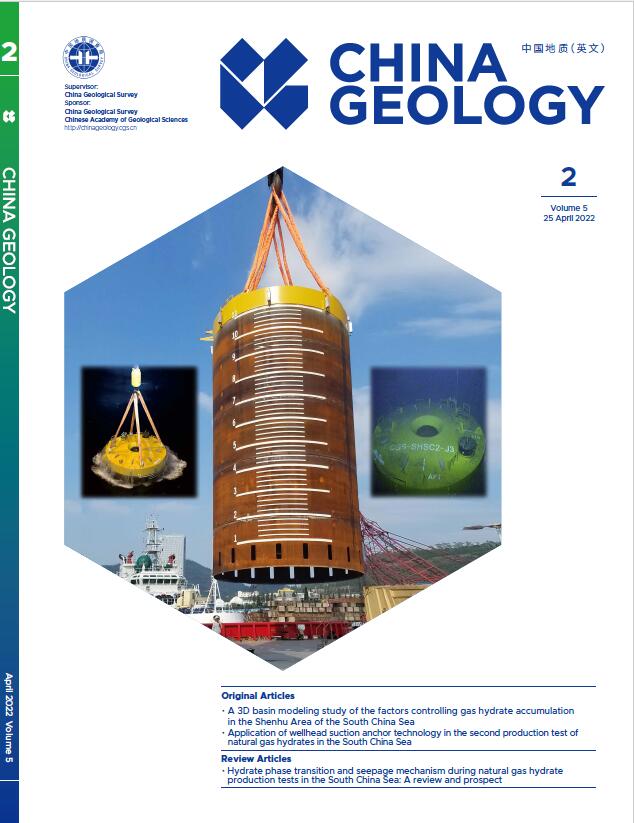| Citation: | Zi-guo Hao (Editor-in-Chief), 2022. Exploring natural gas hydrates toward a carbon-neutral world, China Geology, 5, 197-200. doi: 10.31035/cg2022022 |
Exploring natural gas hydrates toward a carbon-neutral world
-

-
References
Li JF, Ye JL, Qin XW, Qiu HJ, Wu NY, Lu HL, Xie WW, Lu JA, Peng F, Xu ZQ, Lu C, Kuang ZG, Wei JG, Liang QY, Lu HF, Kou BB. 2018. The first offshore natural gas hydrate production test in South China Sea. China Geology, 1(1), 5–16. doi: 10.31035/cg2018003. Ye JL, Qin XW, Xie WW, Lu HL, Ma BJ, Qiu HJ, Liang JQ, Lu JA, Kuang ZG, Lu C, Liang QY, Wei SP, Yu YJ, Liu CS, Li B, Shen KX, Shi HX, Lu QP, Li J, Kou BB, Song G, Li B, Zhang HE, Lu HF, Ma C, Dong YF, Bian H. 2020. The second natural gas hydrate production test in the South China Sea. China Geology, 3(2), 197–209. doi: 10.31035/cg2020043. Zhang HT, Zhang HQ, Zhu YH. 2007. Gas hydrate investigation and research in China: Present status and progress. Geology in China, 34(6), 953–961 (in Chinese with English abstract). -
Access History

-
Figure 1.
a‒“Fendou NO. 5”, the Marine scientific survey vessel that discovered the BSRs in 1999; b‒Professor Guang-xue Zhang, chief scientist of the Guangzhou Marine Geological Survey, China Geological Survey, ignites massive natural gas hydrates in 2013.
-
Figure 2.
The first NGHs production test in the South China Sea: The production test platform “BLUEWHALE #1”.
-
Figure 3.
Blue Whale II-conducting the second NGHs production test in the South China Sea.





 DownLoad:
DownLoad:

